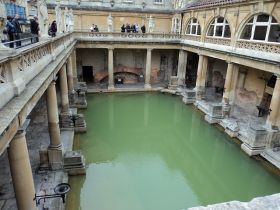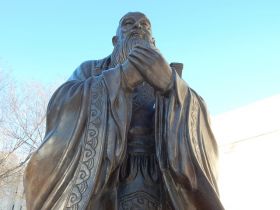The Jews saw water as a purification substance, but more often than not it was something to be feared. The flood in which only 8 people survived according to the book of Genesis, was God’s way of punishing the wicked and starting fresh with Noah and his wife, 3 sons and daughters-in-law along with one male and female of every animal in the Arc that God instructed Noah to build.
Later, when God is inflicting the 10 plagues upon Egypt, he has Moses turn the Nile River from water to blood. Also, the Exodus of the Hebrew slaves from Egypt back to their native land was accomplished by crossing the Red Sea while God parted it.
With the magnitude of power the Jews witnessed in these miraculous happenings, it is no surprise that water was seen as a fearful, powerful element. Still, water is used in the Old Testament as a means of salvation. Moses was saved from the Pharaoh’s decree to kill all Hebrew male babies when his mother made a basket of reeds and floated him down the Nile River in it. Later in Moses’ life, his people were indeed saved by passing through what must have been the terrifying walls of the parted Red Sea, and finally, while wandering in the desert with the Jews, God provided life-giving water from a rock that Moses struck with his staff.
It was also a tradition that Jewish translators would wash their hands and pray to God before doing their work to translate the Torah from Hebrew to Greek. Furthermore, the washing of another’s feet was seen as an act of service, to clean off all the dirt and whatever else collected during the days of walking with no shoes or only thin sandals. Water was ultimately symbolic of purification, removing all that is unholy, to the Jews. (Reference: Parabola Magazine Vol. 34 No. 2)
To learn more about Natural Action Structured Water Units, please visit our Store.

 Twitter
Twitter Facebook
Facebook RSS
RSS Call 928-202-9155
Call 928-202-9155




